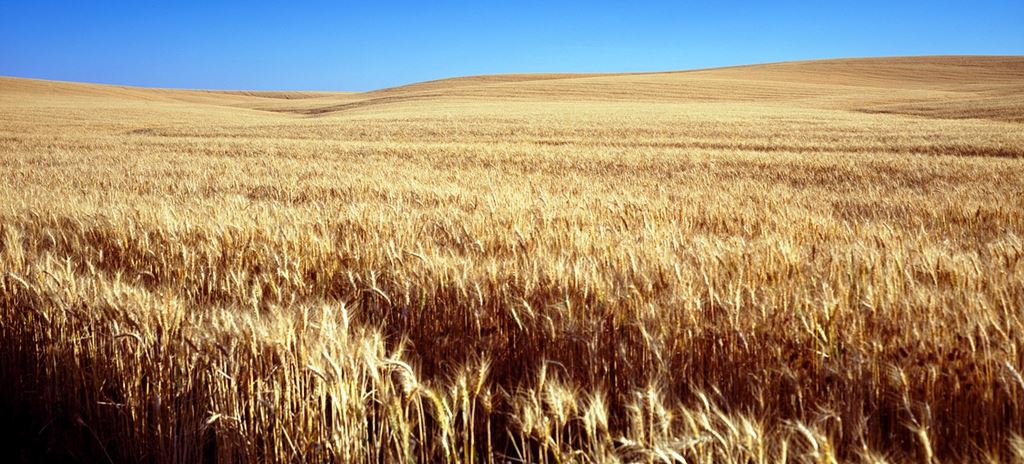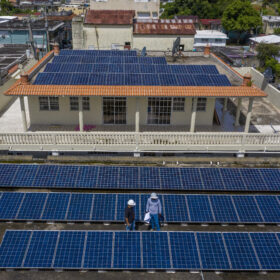With up to 75% of the nation’s large renewable energy projects expected to be developed in the central region of the US by 2050, the Site Renewables Right map, released today by The Nature Conservancy (TNC), is intended to help companies, state agencies, and communities quickly plan, permit, and purchase renewable energy in ways that helps conserve natural areas. The map is intended to be used early on in the development process to inform due diligence analyses by power purchasers and to support application of state and federal renewable energy siting guidance.
The new analysis combines more than 100 GIS layers of wildlife habitat and land use data across 19 states, from Ohio to Wyoming, and estimates at least 120,000 square miles have potential for low-conflict renewable energy siting in the central US. A cursory evaluation of wildlife and habitats data along with basic land use requirements for PV solar facilities, as summarized in TNC’s methods paper, indicates the potential for low-impact solar development in the central US is significantly greater than the stated figures for wind. A higher average power density and smaller projected land use requirements suggests that solar buildout will be less geographically constrained, with low-impact solar development opportunities found across the region. For example, within TNC’s 19-state study area approximately 283GW of technical solar potential exists on current and formerly contaminated lands, landfills, and mine sites alone (USEPA 2018).
“Like any type of development, solar and wind facilities can harm wildlife and habitat if not sited properly. Site Renewables Right provides a way for companies and communities to assess those impacts. It encourages the right conversations to avoid project delays and impacts to the very same wildlife and natural areas we are trying to protect from climate change,” said Nathan Cummins, Director of Renewable Energy Programs, The Nature Conservancy’s Great Plains Division.
The central US is “home on the range”, known for its natural great plains that support abundant wildlife. The Nature Conservancy supports transitioning to a carbon-free future, while protecting our natural areas. Thus identifying places where renewables will have the least impact is the goal of the Site Renewables Right map. The Solar PV map features habitat areas for the following:
• Whooping crane stopover sites (with 400 m avoidance buffer; cf. Baasch et al. 2019)
• Threatened and endangered species
• Water and wetland features (no buffers)
• Protected and managed lands
• Intact natural habitats
• Other areas of biodiversity significance
• Climate resilient lands
“Renewable energy and transmission are critical to reducing emissions and slowing global temperature rise to ensure a cleaner future for both people and wildlife,” stated Garry George, Director, Clean Energy Initiative, National Audubon Society. “The Site Renewables Right tool plays an important role in Audubon’s analysis of clean energy planning and individual projects to make sure that conservation and renewables go hand-in-hand.”
Companies such as Xcel Energy are using Site Renewables Right to find areas where renewable energy development is most likely to avoid important natural areas, permitting delays, and cost overruns. “Renewable energy plays a critical role in Xcel Energy’s vision to deliver at least 80% emissions reduction by 2030, and we’re responsibly developing wind and solar resources to protect the environment,” said Jeff West, Senior Director of Environmental at Xcel Energy.
The Nature Conservancy’s Site Wind Right map, a prior version of TNC’s Site Renewables Right map, won the 2021 “Environmental Protection” Good Practices award from Renewable Grid Initiative (RGI), a European organization focused on energy transmission system operators and non-governmental organizations.
This content is protected by copyright and may not be reused. If you want to cooperate with us and would like to reuse some of our content, please contact: editors@pv-magazine.com.








By submitting this form you agree to pv magazine using your data for the purposes of publishing your comment.
Your personal data will only be disclosed or otherwise transmitted to third parties for the purposes of spam filtering or if this is necessary for technical maintenance of the website. Any other transfer to third parties will not take place unless this is justified on the basis of applicable data protection regulations or if pv magazine is legally obliged to do so.
You may revoke this consent at any time with effect for the future, in which case your personal data will be deleted immediately. Otherwise, your data will be deleted if pv magazine has processed your request or the purpose of data storage is fulfilled.
Further information on data privacy can be found in our Data Protection Policy.